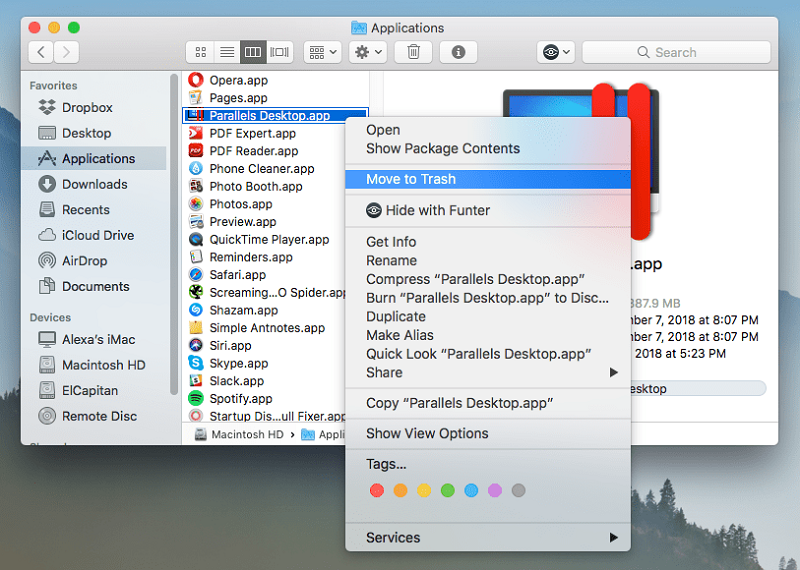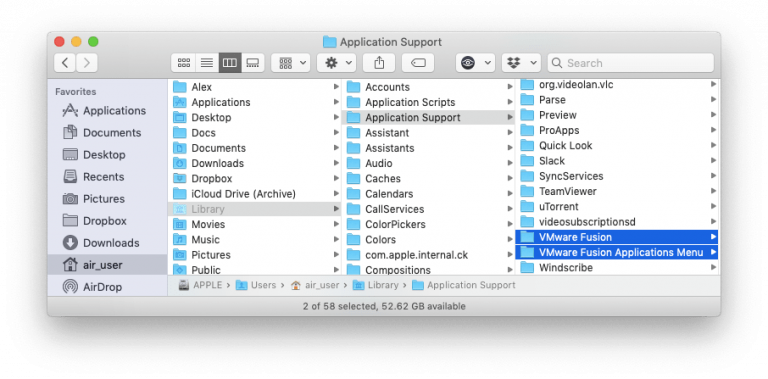

- #How to completely uninstall vmware on mac how to
- #How to completely uninstall vmware on mac password
- #How to completely uninstall vmware on mac windows
How to Uninstall Apps That Don’t Appear in Your Applications Folderīut what about applications that don’t appear here? For example, install the Flash plug-in for Mac OS X, or the Java runtime and browser plug-in for Mac, and neither will appear in your Applications folder.

Just launch AppCleaner, search for an application in its main window, and click on it, then click the “Remove” button in the popup window that appears. If you absolutely must remove those files (say, if you want to reset an app to its default settings), you can use a handy app called AppCleaner to fully uninstall an app, along with all its extra files. RELATED: How to Reset Any Mac App to Its Default Settings It’ll keep all your preferences from when you had it installed before. The preferences will still be available on your Mac, too - this is convenient if you’re uninstalling an app only to replace it with a newer version of the same app, or if you reinstall the app later down the line. Most of the time, these files will use very little space and won’t cause a problem. Erase an application and it will leave preference files left over in your Library folders. The above method doesn’t actually erase an application’s preferences. For example, try to move the Chess app to the trash and you’ll see a message saying, “Chess can’t be modified or deleted because it’s required by OS X.” How to Remove Left Behind Files Note that you can’t remove built-in applications by doing this. Uninstalling them will remove whatever system-wide changes they made. These applications were installed using the Mac package installer.
#How to completely uninstall vmware on mac password
Restart your macOS.However, some applications will prompt you for a password when you try to move them to the trash. The following files/folders of VMware Fusion, you need to use “rm” command to delete on the Terminal.ħ. Locate any folders that are named the following names and drag them to the Trash. if user password is required, enter it.ĥ.Then, hold an Option key while the Finder’s Go is being selected. Find the VMware Fusion icon, right-click on it and select Move to Trash. Switch to the Finder again and select Go -> Applications from the Finder menu. On the main window of Activity Monitor, find the entry for VMware Fusion Applications Menu, VMware Fusion Start Menu, vmware-docker, VMwareVMCI, vmioplug, vmmon, vmnet, VMware Fusion select them and click Quit Process.Ĥ. Locate the Activity Monitor icon and double-click on it.ģ. Switch to the Finder and select Go -> Utilities from the Finder menu.Ģ. The steps listed below will guide you in removing VMware Fusion:ġ. Use manually removal solution to remove VMware Fusion in your macOS VMware Fusion will be automatically and completely removed. Click “Run Analysis”, and then “Complete Uninstall”. VMware Fusion icon will be displayed on the Apps listview of MacRemover, and click on it.ĥ. Locate the MacRemover icon and double-click on it.Ĥ. Switch to Finder and select Go -> Applications from the Finder menu.ģ. Use automatically removal solution to remove VMware Fusion in your macOSĢ. Video: How To Automatically Remove VMware Fusion by MacRemover? Fusion is simple enough for home users and powerful enough for IT professionals, developers and businesses.
#How to completely uninstall vmware on mac windows
VMware Fusion lets users run Windows and hundreds of other operating systems on a Mac, without rebooting. This tutorial contains an automatically removal solution, a manually removal solution and a video is provided which teach you how to remove VMware Fusion by MacRemover. This is an effective tutorial that helps you learn how to remove VMware Fusion on your macOS and Mac OS X.


 0 kommentar(er)
0 kommentar(er)
